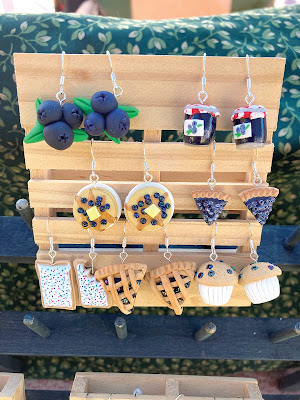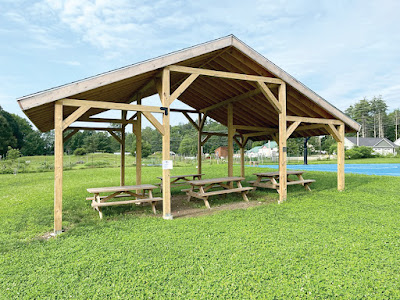If you’ve traveled through Raymond via Route 302 recently, you may have noticed the cheerful holiday banners adorning some of the light posts along the way. The flags remind us to “dine, explore, and shop Raymond.”
Raymond Beautification Committee President Sharon Dodson said that the Raymond Public Works Department is responsible for placing the banners this year.
Don McClellan of Raymond Public Works is the go-to person for information about most of the decorations that appear along Route 302 in town. He said that he agrees that the banners came about because of COVID and the school graduate pictures. The hardware and brackets for the banners can be recycled, and the banners can be switched out as needed.
McClellan pointed out that the banners are much less “Christmas-y” than hanging wreaths. The colors selected are neutral and this allows the banners to be left up much longer than a traditional Christmas wreath.
He said that it was a massive effort each year involved with acquiring the wreaths and decorating each one.
“Our volunteers are slowing down,” McClellan said, “So it makes sense to shift to a lower-maintenance solution.”
Placing wreaths posed several problems including cost and disposal, but these banners are a more long-lasting solution.
“Banners could be used for several years before needing replacement, and much cheaper than wreaths which need to be purchased every year,” Dodson said.
Besides, the message conveyed lasts far beyond the holiday season.
McClellan calls it “long-term signage” which could ultimately evolve into banners being placed throughout the four seasons in town.
This opens the door for a lot of opportunities which could get the community involved, perhaps through its own committee or a push toward involving the younger generation of Raymond residents.
Many people may remember the American flags displayed in Raymond around Independence Day. This display is also thanks to the combined efforts of local veteran’s groups, Raymond Public Works, and the Raymond Lions Club over the years.
The Raymond Beautification Committee has always been involved with Route 302 decorating in some capacity, according to McClellan.
But unfortunately, membership is down and many of the committee members are less able to contribute this year than in the past, so these banners are a perfect solution in the short term.
McClellan said that the Raymond Beautification Committee remains a work in progress and continues to move forward.
He said that a revisioning for the committee is in the works, and Raymond residents will be kept informed as developments arise. <


.jpg)















